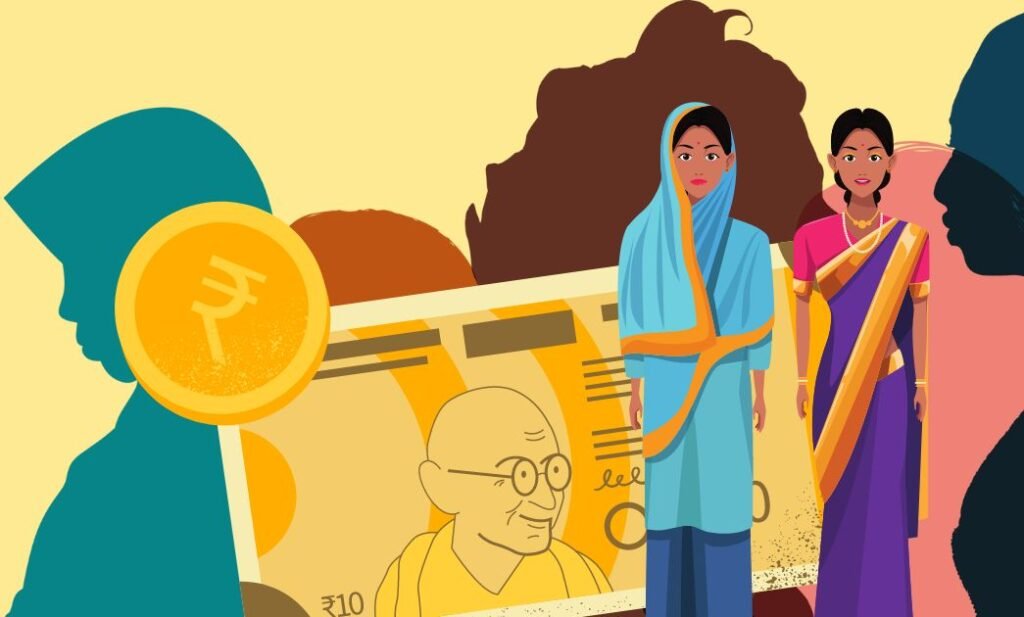The world that we live in today has risen from the patriarchal beliefs of the archaic period to give a society where a woman can find her place and call it home.
A woman, even in the 21st century, struggles to find an identity, especially in poor communities that expect her to stay at home and look after the family and depend on male figures for all things finance. Because of such chauvinistic norms, women hesitate to state opinions about money or learn about it. The situation is dire, especially in low-income households and rural areas. Many women belonging to backward villages in remote areas are not even aware of bank savings and how helpful they can be in the future.
But, there is a silver lining in the cloud. Our country is steadily coming to terms with the fact that women are an integral part of the economy. Times are changing fast, and women’s financial inclusion is becoming more important than ever before. Women are now seen as crucial players in the development of family finances, communities, and economies.
In this blog, we will explore how women’s financial inclusion can be enabled and how addressing hesitancy among low-income households can help achieve this goal.
Addressing hesitancy among low-income households
While there have been significant strides in enabling women’s financial inclusion, there is still hesitancy among low-income households to embrace financial services and products. This hesitancy can be attributed to various reasons, such as socio-economic norms, lack of knowledge, fear of debt, and cultural practices.
Addressing these barriers is crucial to enable women’s financial inclusion and promoting economic and social development. Here, financial literacy and education programs can play a huge role in helping overcome the knowledge gap and empower women to make informed financial decisions. These programs can help women understand financial concepts, improve their money management skills, and build confidence in using financial services and products.
In light of this, the country is taking initiatives towards enabling women’s economic empowerment through financial inclusion. Let’s read about them below
- The Pradhan Mantri Jan Dhan Yojana
This initiative aims to provide bank-saving services to underserved communities. The yojana has 46.25 crores of accounts, and 56% belong to women. The PMJDY can be viewed as an effective step towards women’s economic empowerment in India.
- Promoting women’s access to digital instruments
Women in rural areas are less likely to own mobile phones. Some Policy initiatives (2014 National Digital Literacy Mission) demonstrate how the private sector can work with the government to promote digital literacy.
- Creating a strong bond with self-help groups
Self-help groups like the bank ‘sakhis’ can organise financial literacy workshops and centres to create awareness about finances and digital instruments, and can also include livelihood and skills development programs
- Promote digital credit for woman-owned businesses
Women-owned businesses often face huge credit gaps due to social biases and fail to get collateral because of limited access to assets and property. Fintech can promote bias-free digital lending to women-owned businesses. This help can make women’s contribution to the economy more visible.
- The bank correspondents and ‘sakhis’
To lower their paranoia about banking, the National Rural Livelihood Mission appointed bank correspondents and ‘sakhis’ who reach out to the PMJDY women customers through their highly effective network. They engage with these women by giving them cash-in and cash-out services and providing them with information about investments and also urge them to save.
In conclusion, the empowering of women through financial education is crucial for the economic and social development of individuals, households, and communities. If the government aims to become a USD 5 trillion economy by 2024-25, it must seriously invest in women’s empowerment through financial inclusion. Empowering women economically can lead to increased investment in education and health, which in turn, can lead to better outcomes for entire communities.
